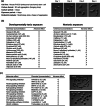Toward better assessments of developmental toxicity using stem cell-based in vitro embryogenesis models
- PMID: 35102709
- PMCID: PMC9339025
- DOI: 10.1002/bdr2.1984
Toward better assessments of developmental toxicity using stem cell-based in vitro embryogenesis models
Abstract
In the past few decades, pluripotent stem cells have been explored as nonanimal alternatives to assess the developmental toxicity of chemicals. To date, numerous versions of stem cell-based assays have been reported that are allegedly effective. Nonetheless, none of the assays has become the gold standard in developmental toxicity assessment. Why? This article discusses several issues in the hope of facilitating the refinement of stem cell assays and their acceptance as the cornerstone in predictive developmental toxicology. Each stem cell assay is built on a limited representation of embryogenesis, so that multiple assays are needed to detect the diverse effects of various chemicals. To validate and compare the strengths and weaknesses of individual assays, standardized lists of reference chemicals should be established. Reference lists should consist of exposures defined by toxicokinetic data, namely maternal plasma concentrations that cause embryonic death or malformations, and also by the effects on the molecular machineries that control embryogenesis. Although not entirely replacing human or animal tests, carefully selected stem cell assays should serve as practical and ethical alternatives to proactively identify chemical exposures that disturb embryogenesis. To achieve this goal, unprecedented levels of coordination and conviction are required among research and regulatory communities.
Keywords: Daston list; adverse outcome pathway; embryo; embryotoxicity; gastruloid; risk assessment; teratogen.
© 2022 The Author. Birth Defects Research published by Wiley Periodicals LLC.
Figures



Similar articles
-
Developmental toxicity testing from animal towards embryonic stem cells.ALTEX. 2005;22(2):47-57. ALTEX. 2005. PMID: 15953962 Review.
-
Use of In Vitro Morphogenesis of Mouse Embryoid Bodies to Assess Developmental Toxicity of Therapeutic Drugs Contraindicated in Pregnancy.Toxicol Sci. 2016 Jan;149(1):15-30. doi: 10.1093/toxsci/kfv209. Epub 2015 Sep 18. Toxicol Sci. 2016. PMID: 26385866
-
Growing knowledge of using embryonic stem cells as a novel tool in developmental risk assessment of environmental toxicants.Life Sci. 2016 Aug 1;158:137-60. doi: 10.1016/j.lfs.2016.05.027. Epub 2016 May 18. Life Sci. 2016. PMID: 27208651
-
Individual and combined developmental toxicity assessment of bisphenol A and genistein using the embryonic stem cell test in vitro.Food Chem Toxicol. 2013 Oct;60:497-505. doi: 10.1016/j.fct.2013.08.006. Epub 2013 Aug 12. Food Chem Toxicol. 2013. PMID: 23948354
-
Stem cell models for drug discovery and toxicology studies.J Biochem Mol Toxicol. 2013 Jan;27(1):17-27. doi: 10.1002/jbt.21470. Epub 2013 Jan 4. J Biochem Mol Toxicol. 2013. PMID: 23293059 Review.
Cited by
-
An active metabolite of the anti-COVID-19 drug molnupiravir impairs mouse preimplantation embryos at clinically relevant concentrations.Reprod Toxicol. 2023 Oct;121:108475. doi: 10.1016/j.reprotox.2023.108475. Epub 2023 Sep 23. Reprod Toxicol. 2023. PMID: 37748715 Free PMC article.
-
Development of Advanced Oral-on-a-Chip: Replicating the Intricate Human Oral Microenvironment.Int J Biol Sci. 2024 Oct 28;20(15):5888-5909. doi: 10.7150/ijbs.104351. eCollection 2024. Int J Biol Sci. 2024. PMID: 39664582 Free PMC article.
-
Validation of a mouse 3D gastruloid-based embryotoxicity assay in reference to the ICH S5(R3) guideline chemical exposure list.Reprod Toxicol. 2024 Apr;125:108558. doi: 10.1016/j.reprotox.2024.108558. Epub 2024 Feb 15. Reprod Toxicol. 2024. PMID: 38367697 Free PMC article.
-
Human-Based New Approach Methodologies in Developmental Toxicity Testing: A Step Ahead from the State of the Art with a Feto-Placental Organ-on-Chip Platform.Int J Environ Res Public Health. 2022 Nov 28;19(23):15828. doi: 10.3390/ijerph192315828. Int J Environ Res Public Health. 2022. PMID: 36497907 Free PMC article. Review.
-
Developmental toxicity of remdesivir, an anti-COVID-19 drug, is implicated by in vitro assays using morphogenetic embryoid bodies of mouse and human pluripotent stem cells.Birth Defects Res. 2023 Jan 15;115(2):224-239. doi: 10.1002/bdr2.2111. Epub 2022 Nov 8. Birth Defects Res. 2023. PMID: 36349436 Free PMC article.
References
-
- Beekhuijzen, M. , de Koning, C. , Flores‐Guillén, M. E. , de Vries‐Buitenweg, S. , Tobor‐Kaplon, M. , van de Waart, B. , & Emmen, H. (2015). From cutting edge to guideline: A first step in harmonization of the zebrafish embryotoxicity test (ZET) by describing the most optimal test conditions and morphology scoring system. Reproductive Toxicology, 56, 64–76. 10.1016/j.reprotox.2015.06.050 - DOI - PubMed
Publication types
MeSH terms
Grants and funding
LinkOut - more resources
Full Text Sources
Medical
Miscellaneous

